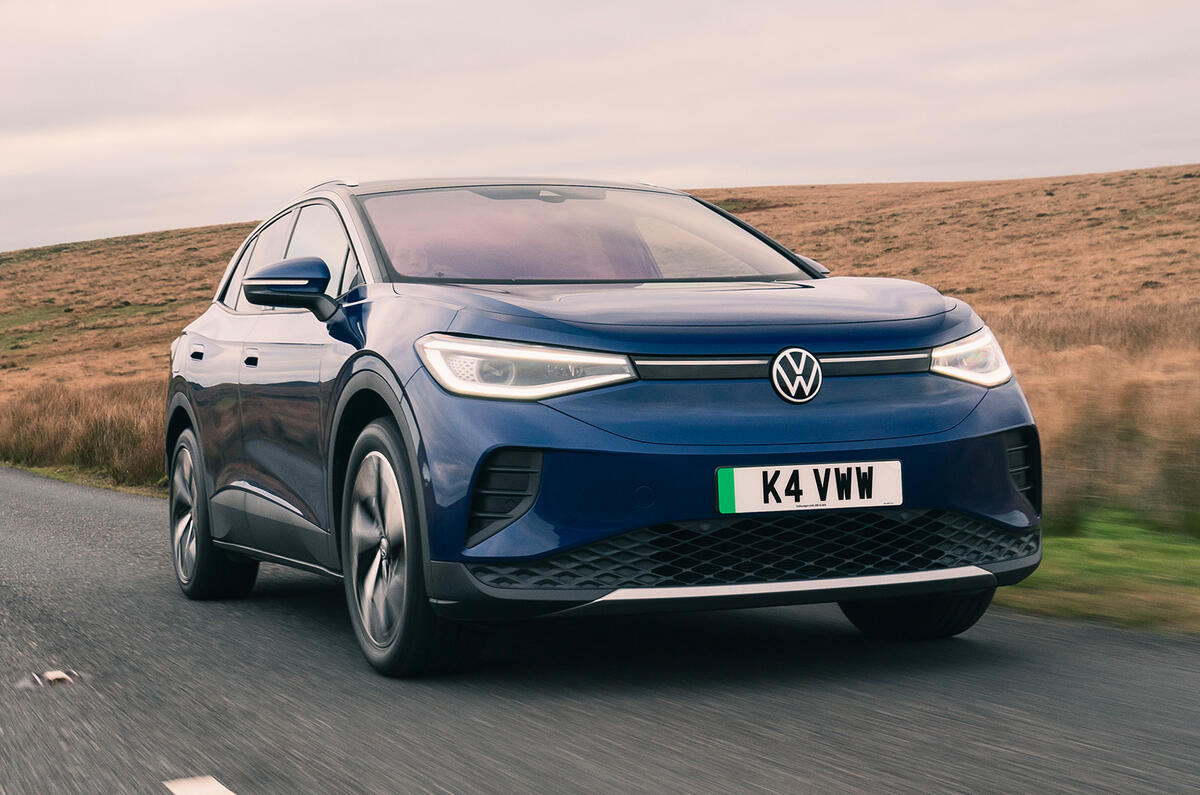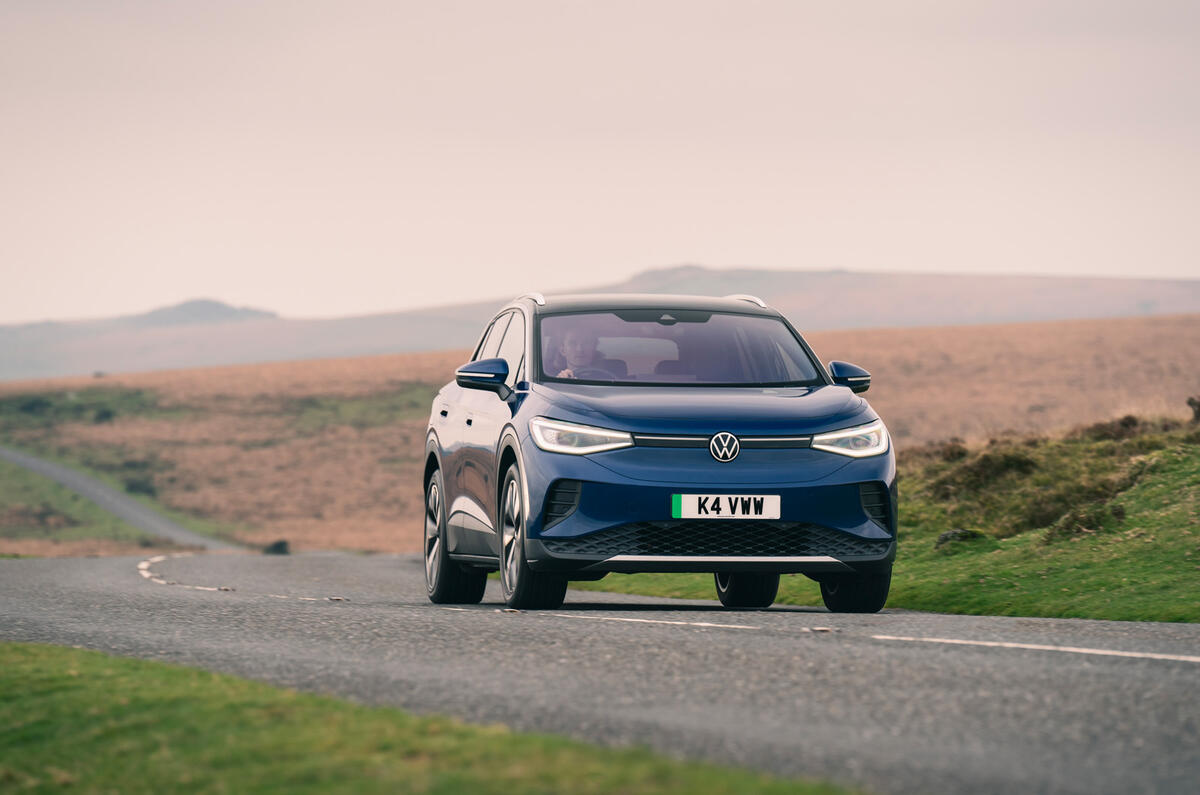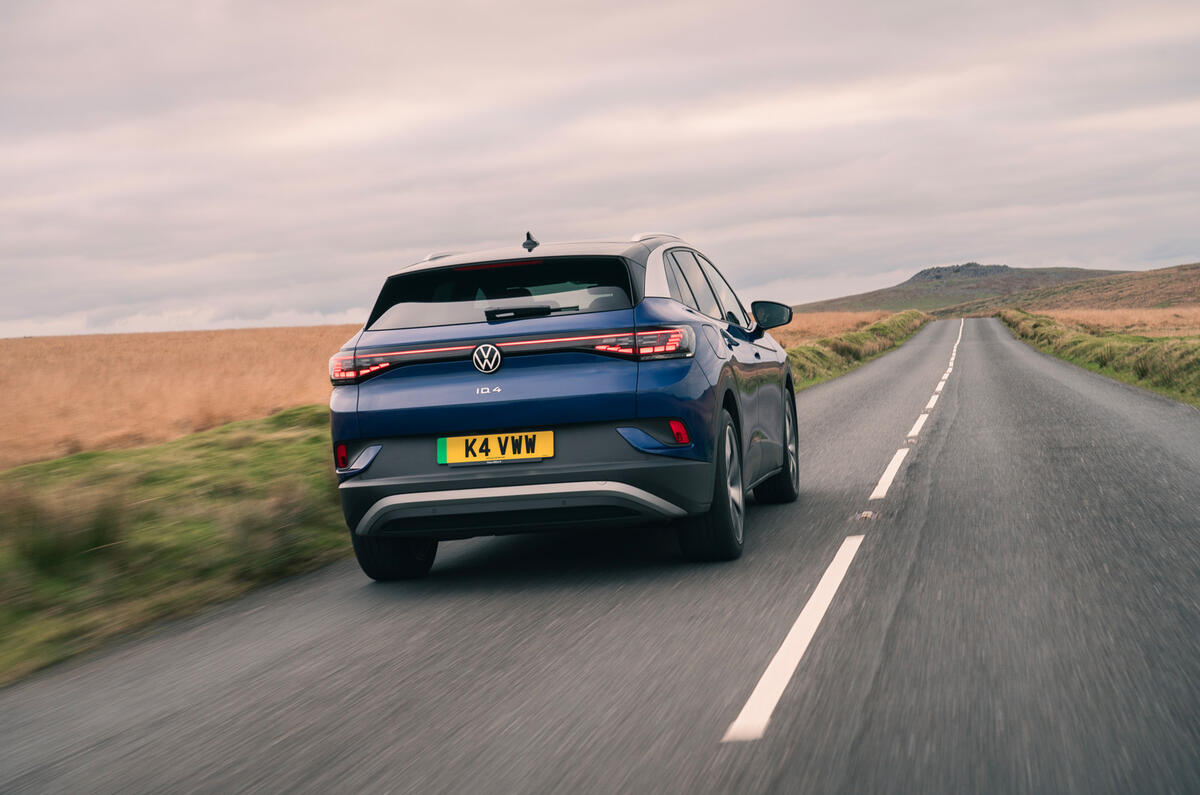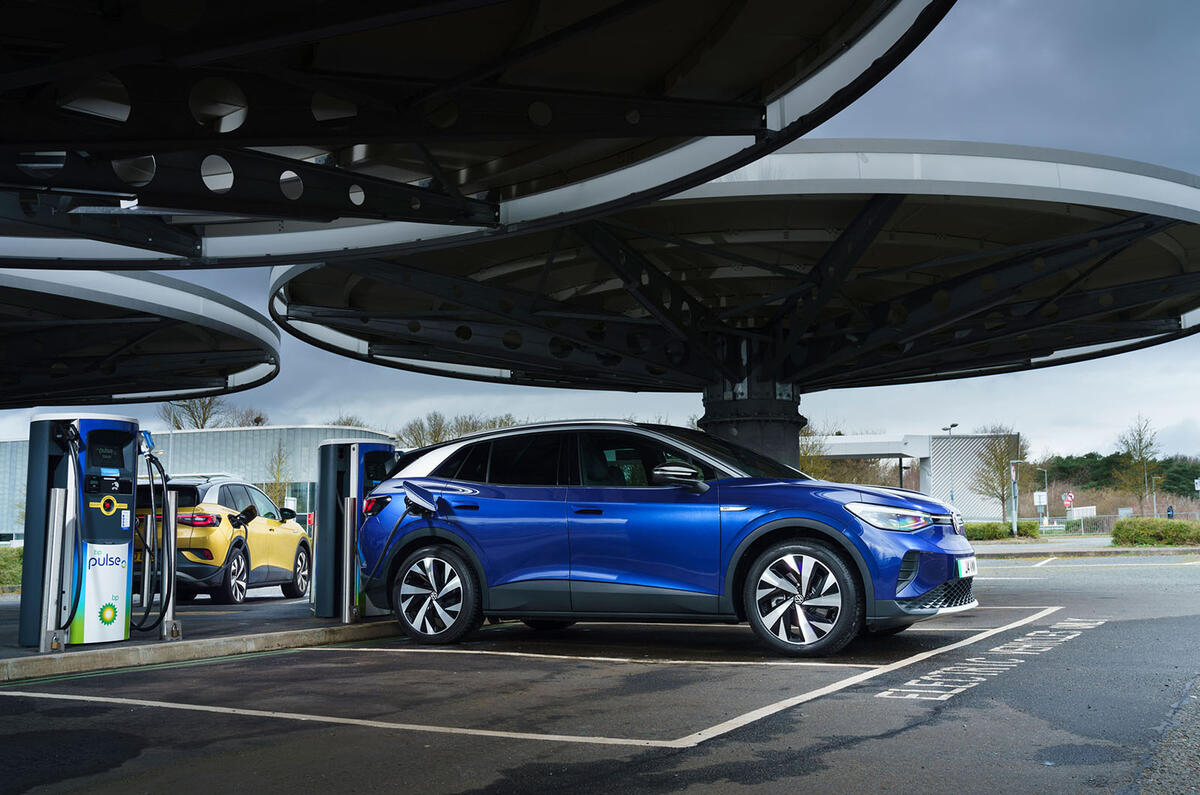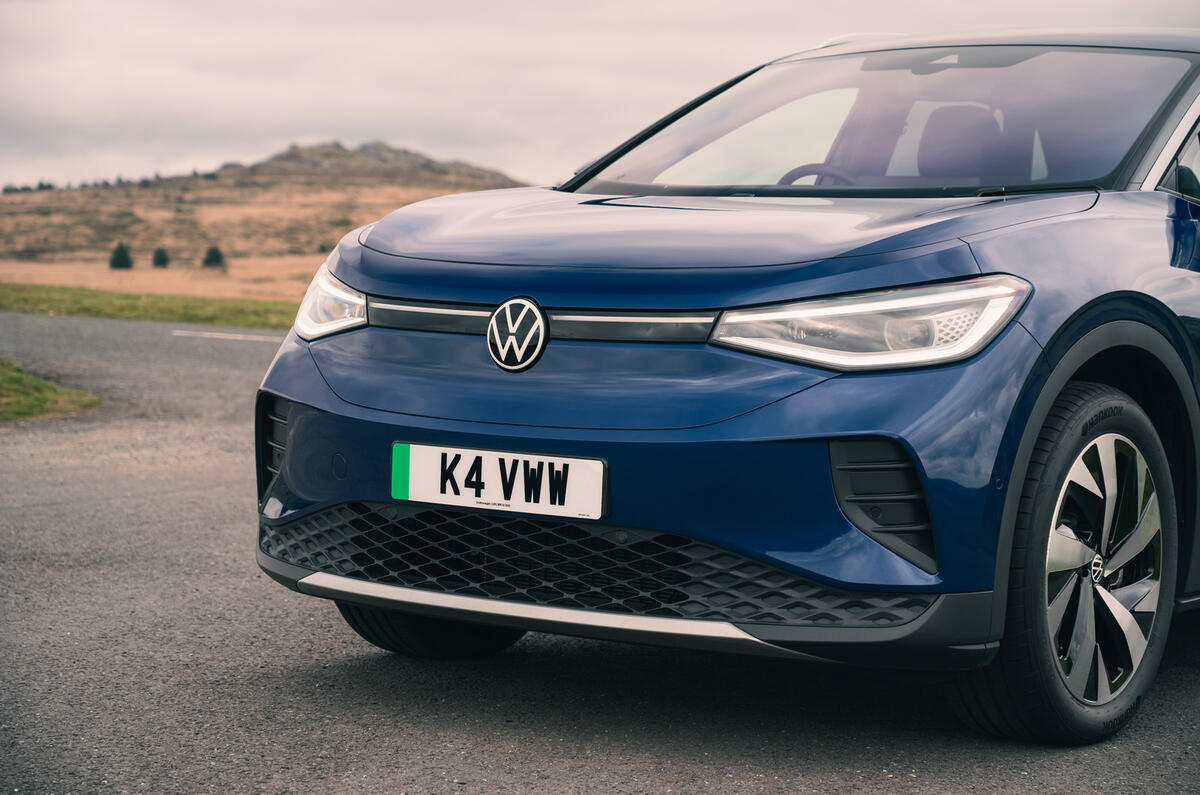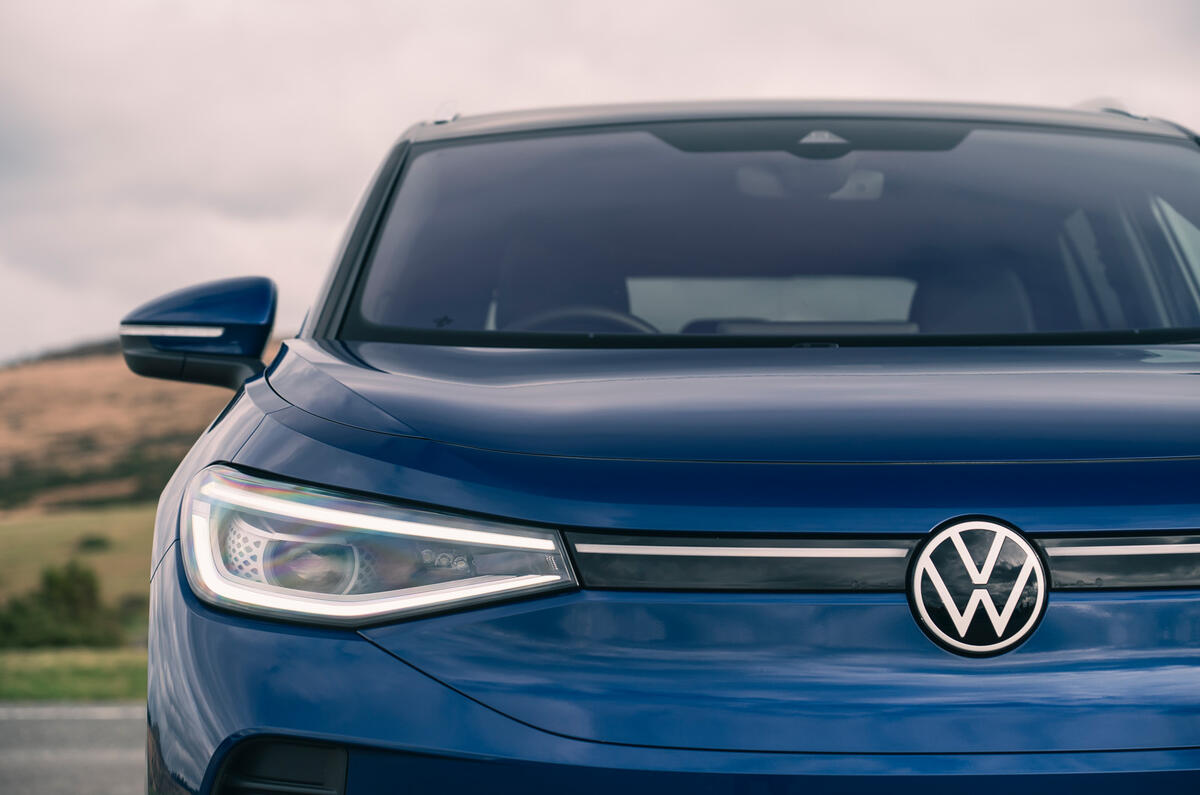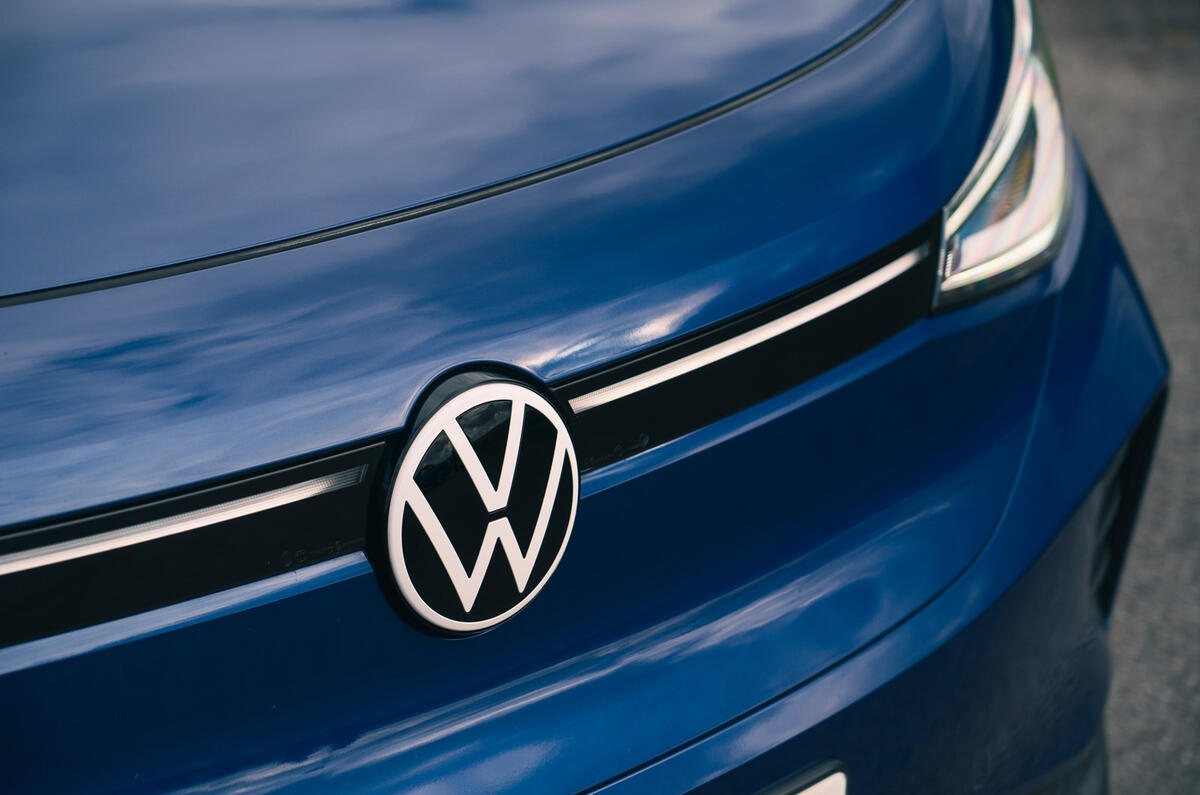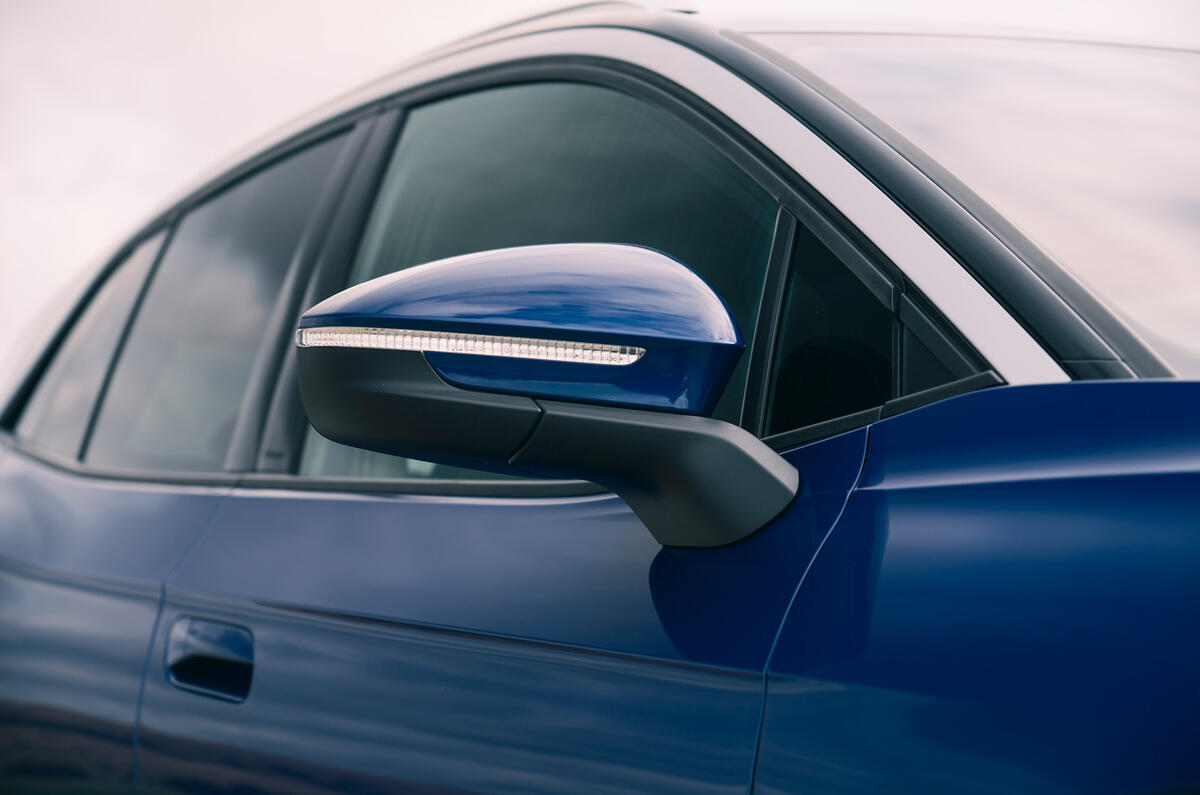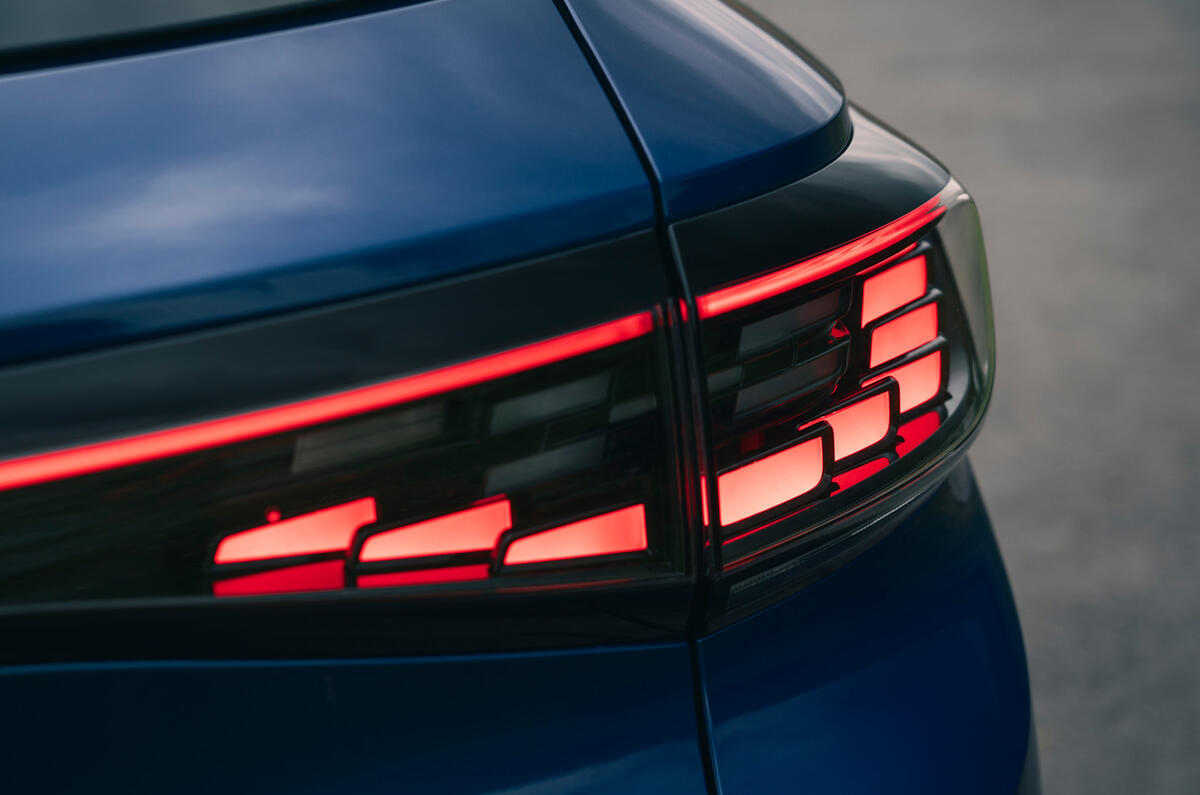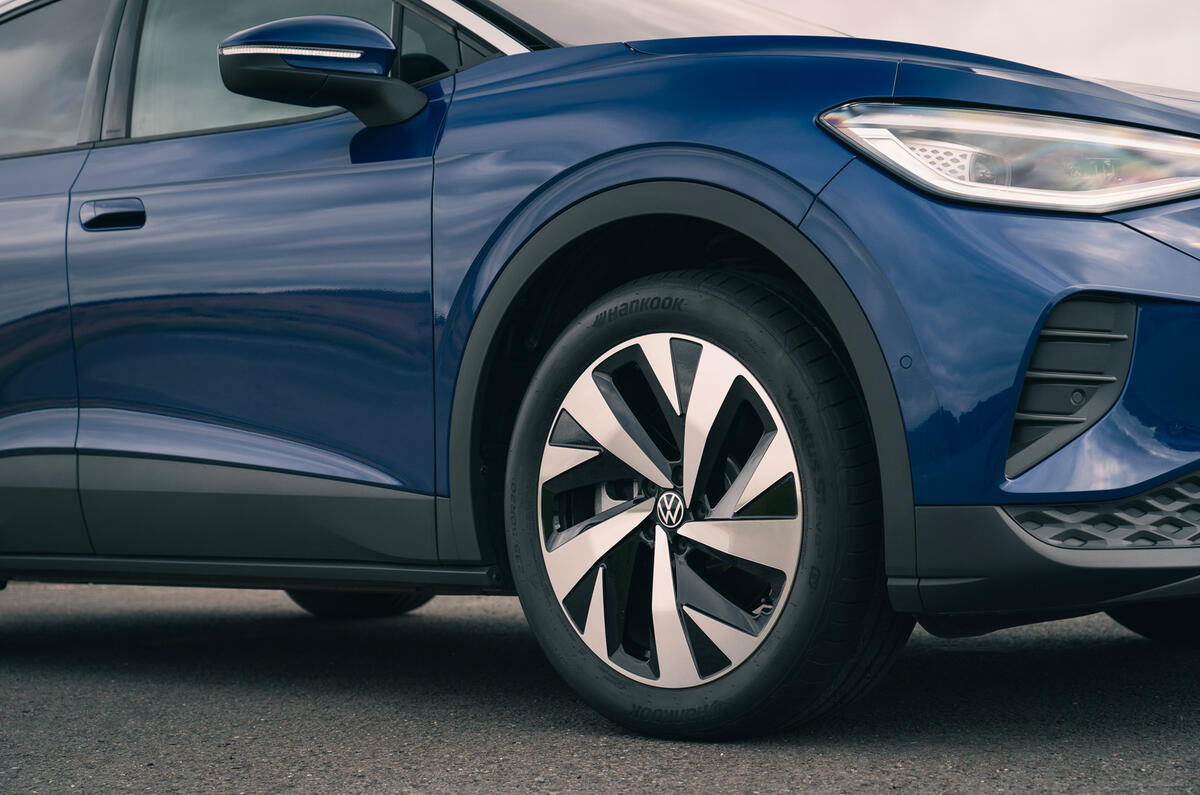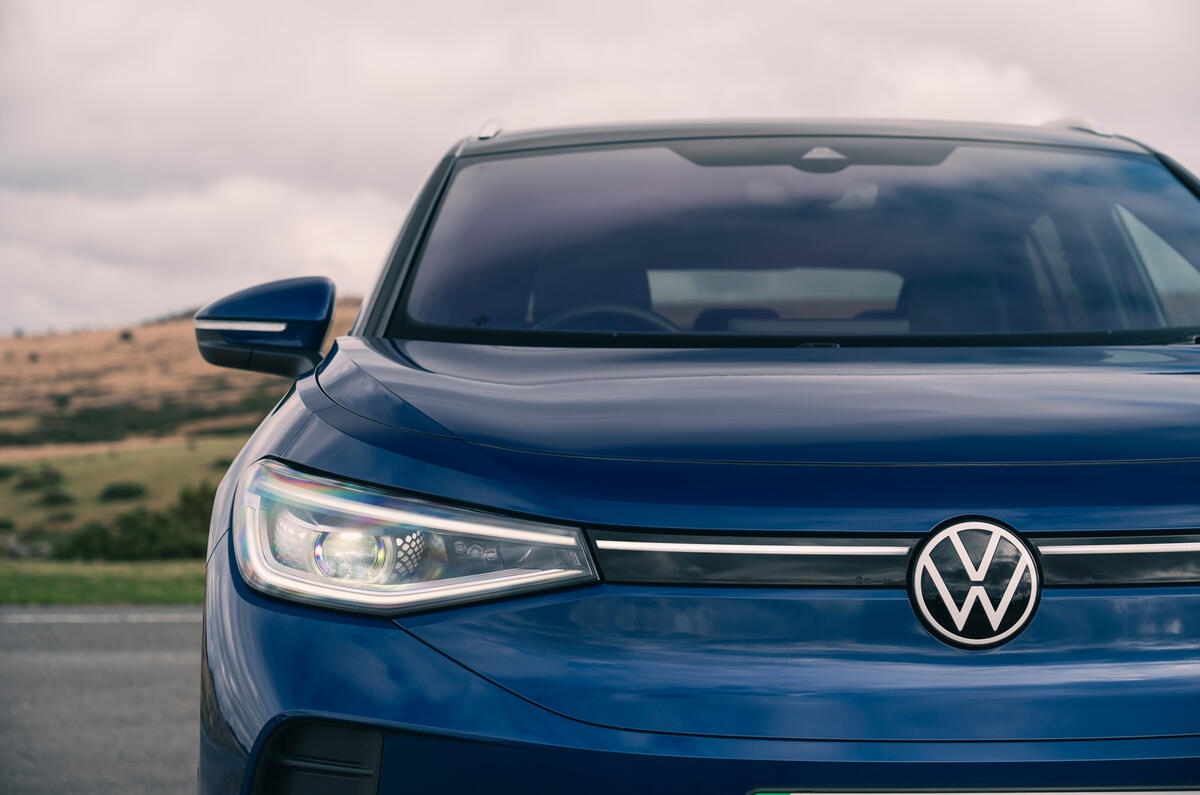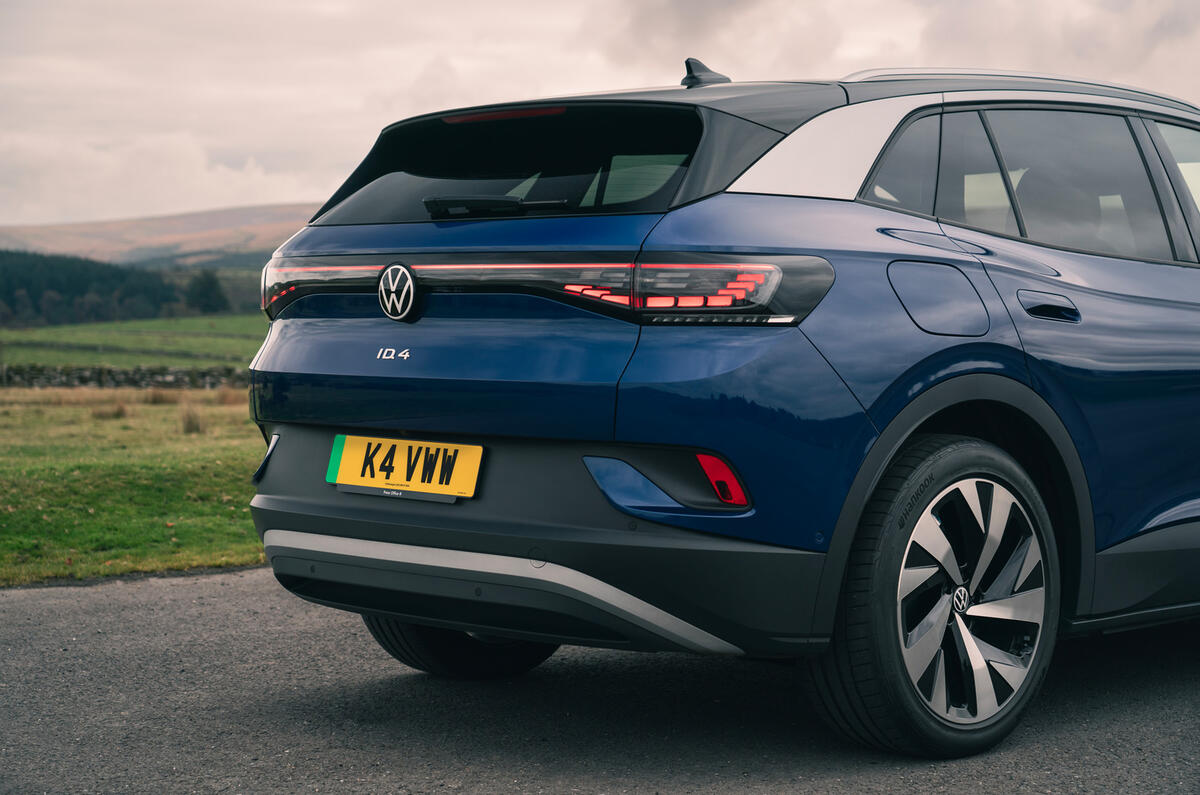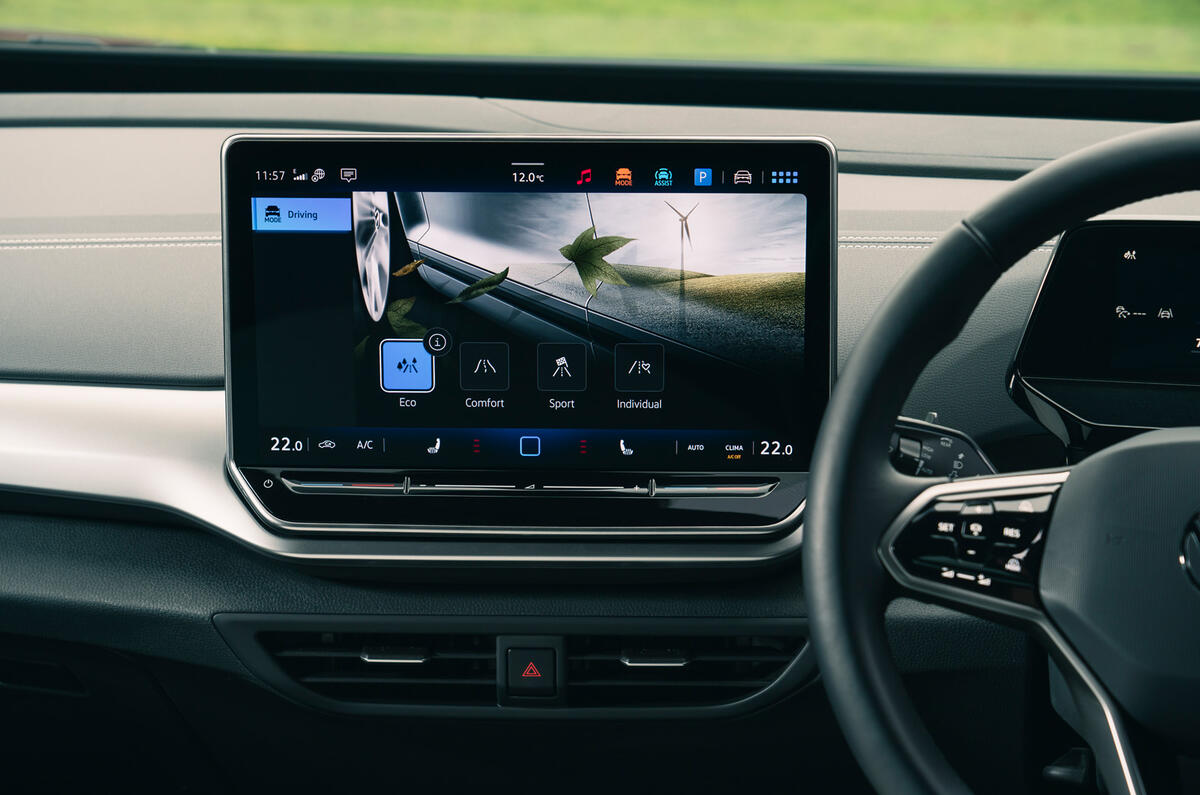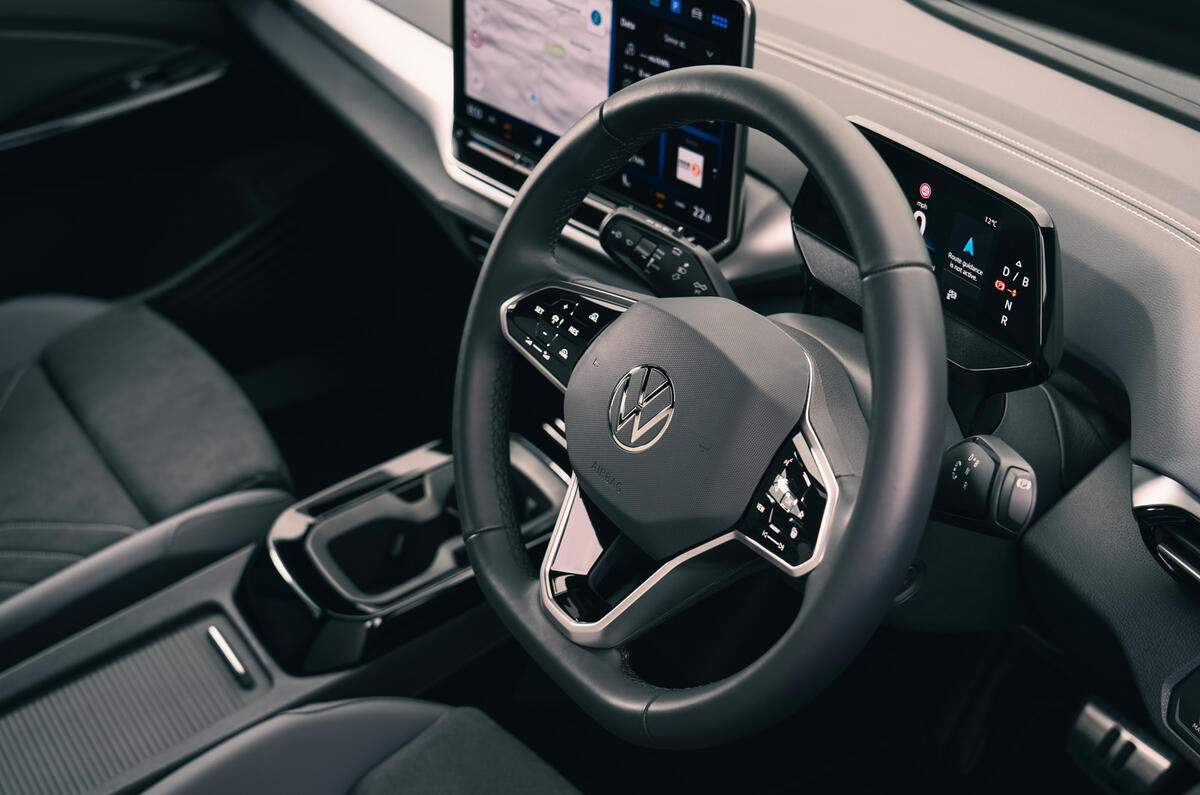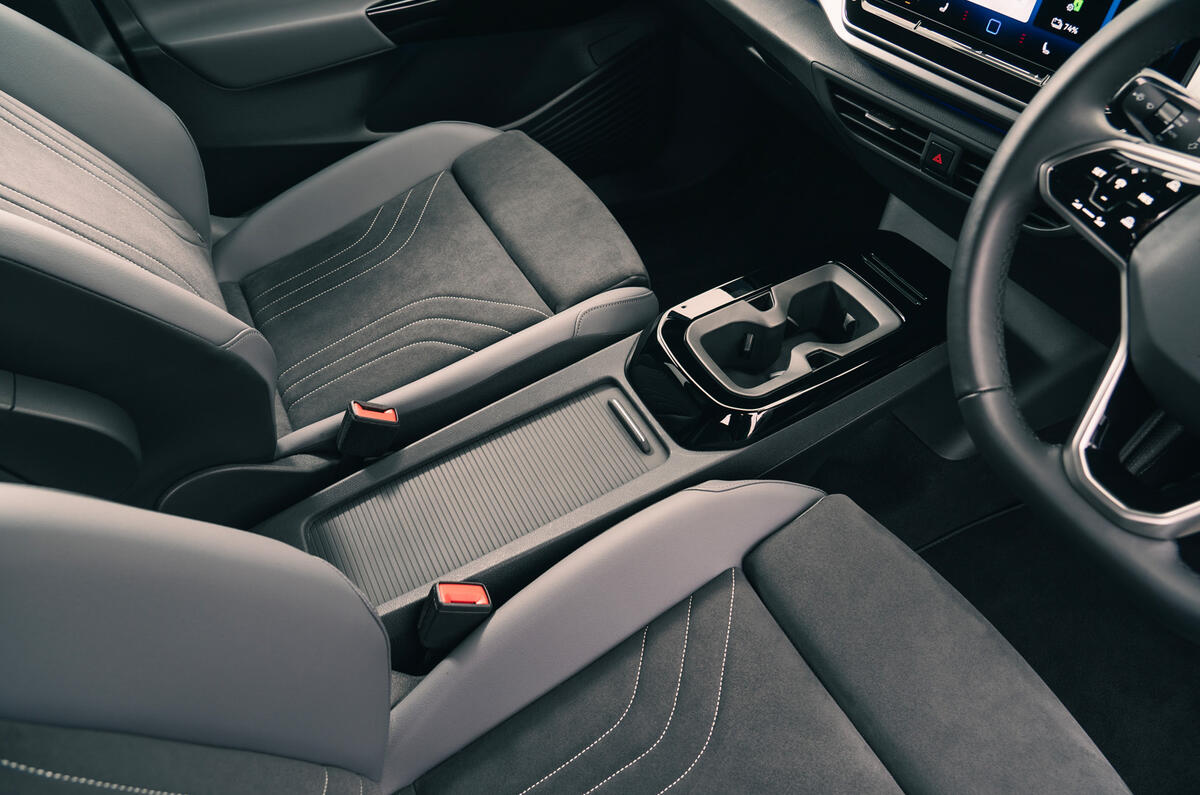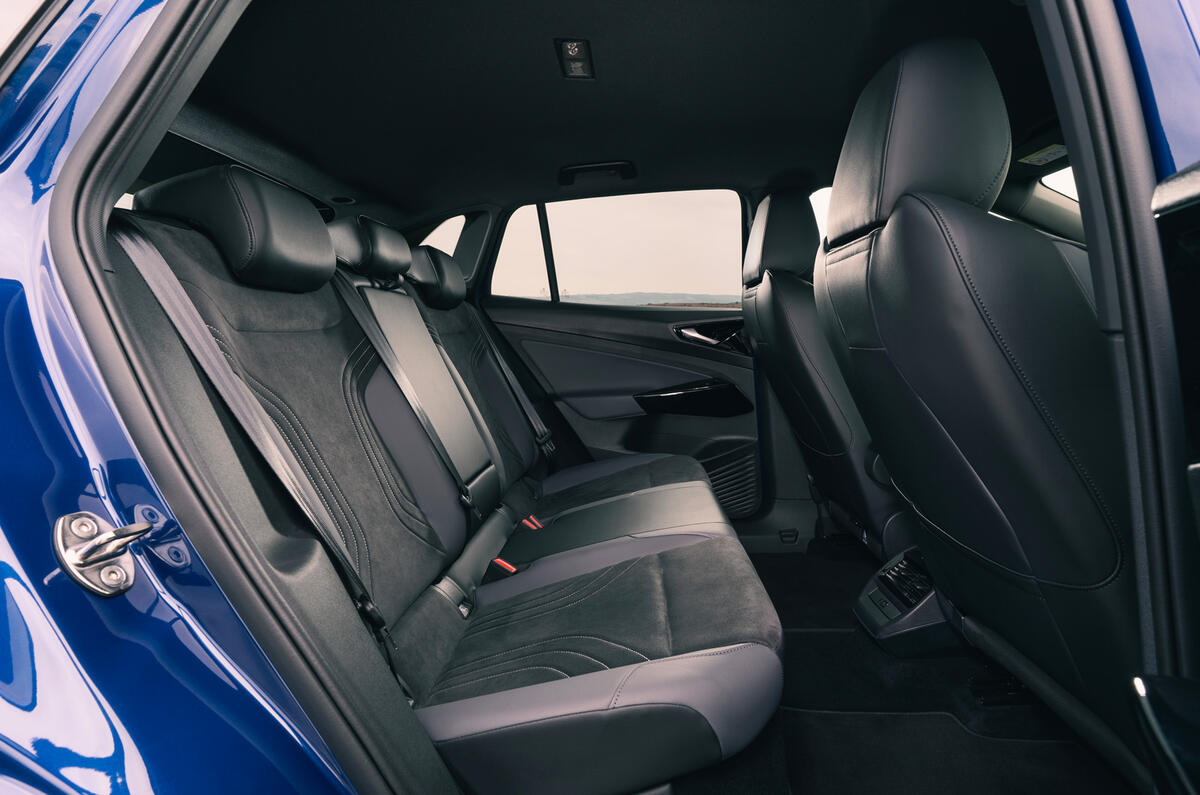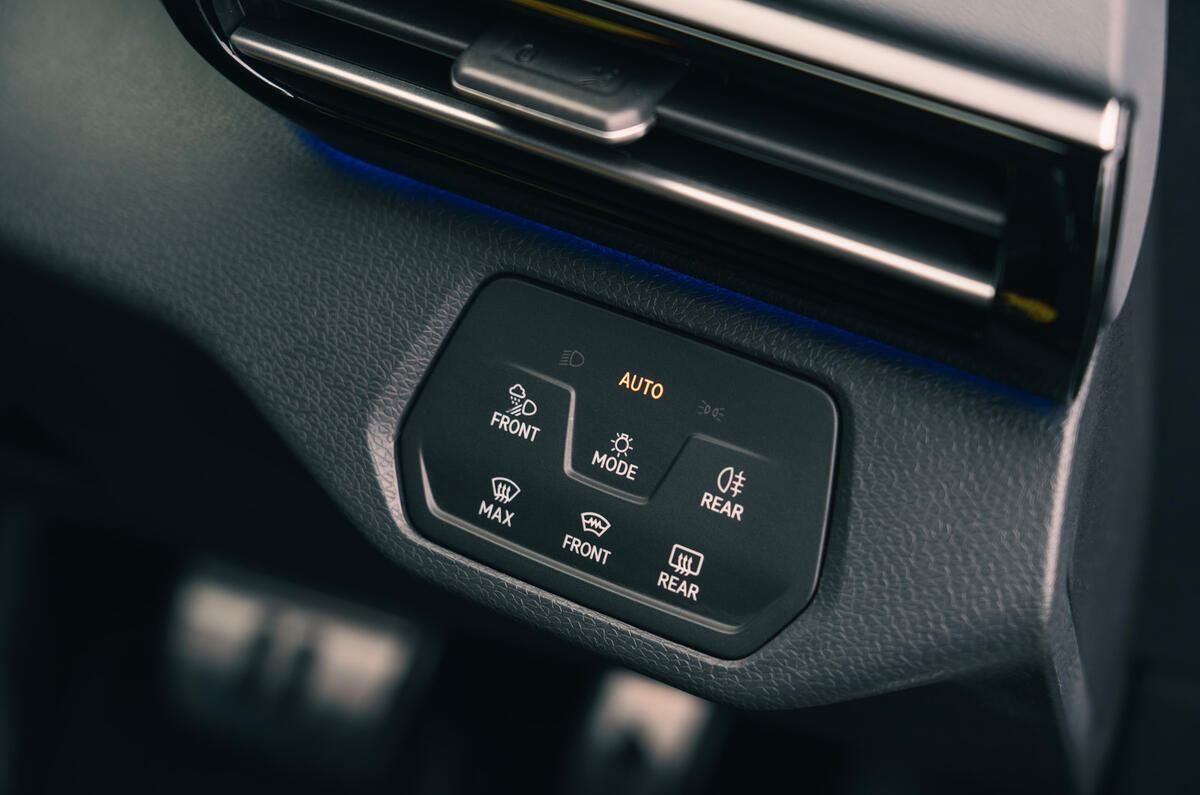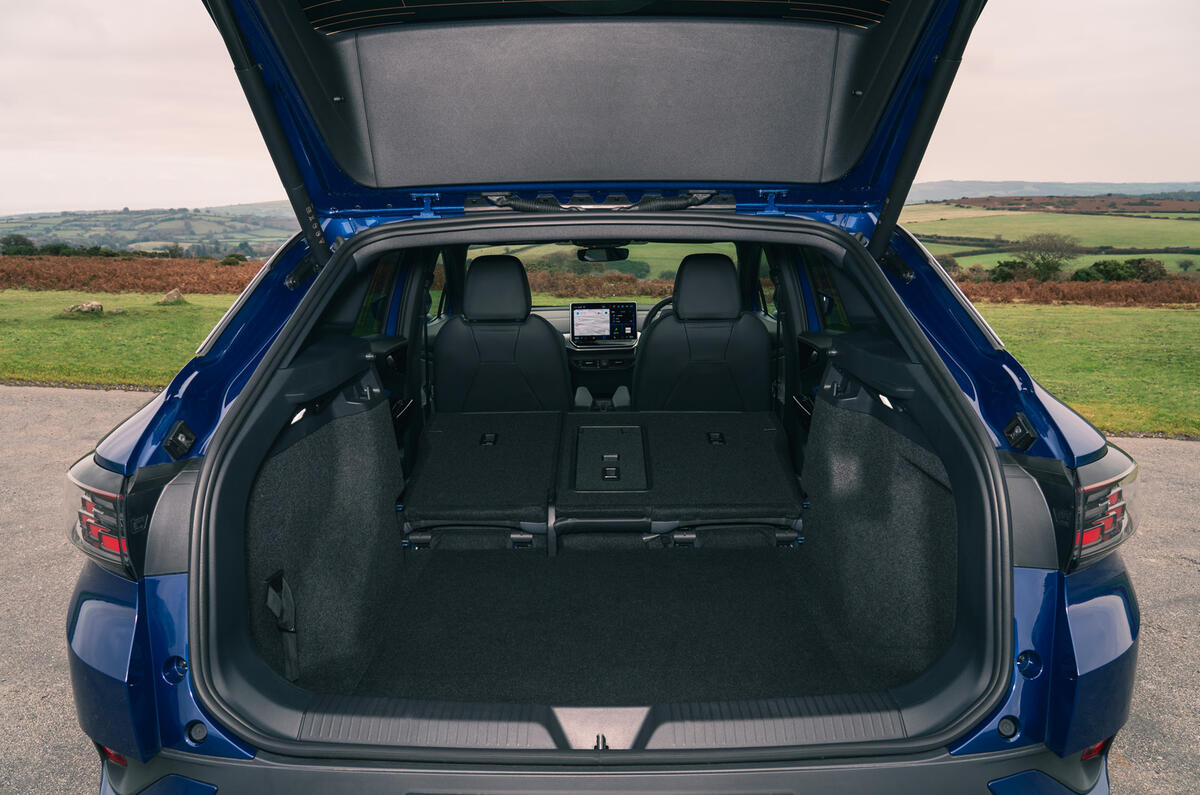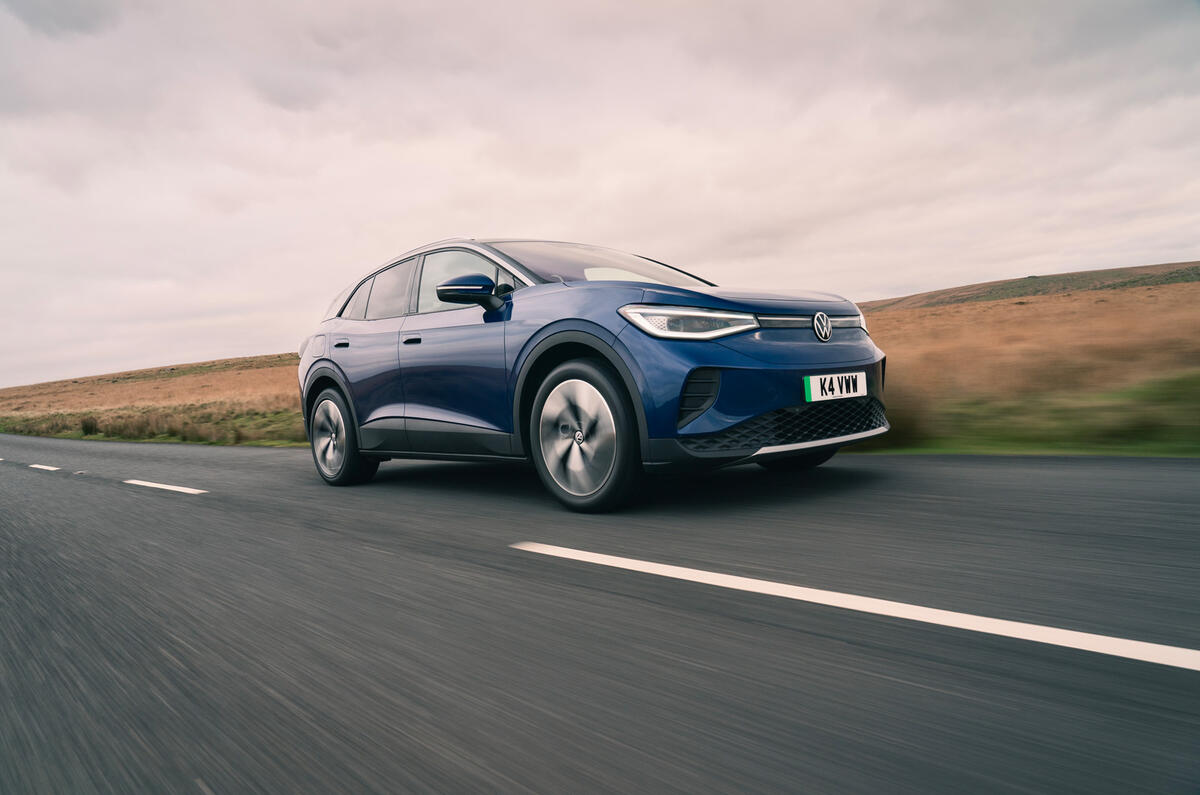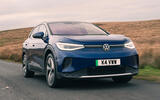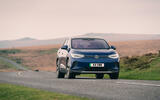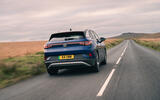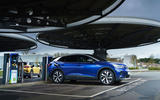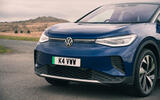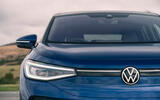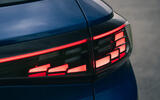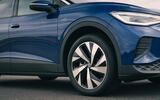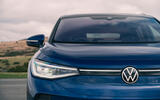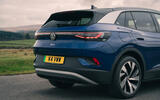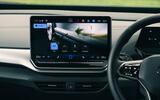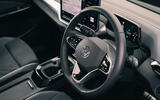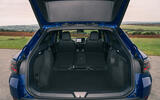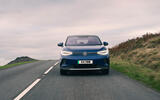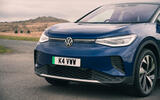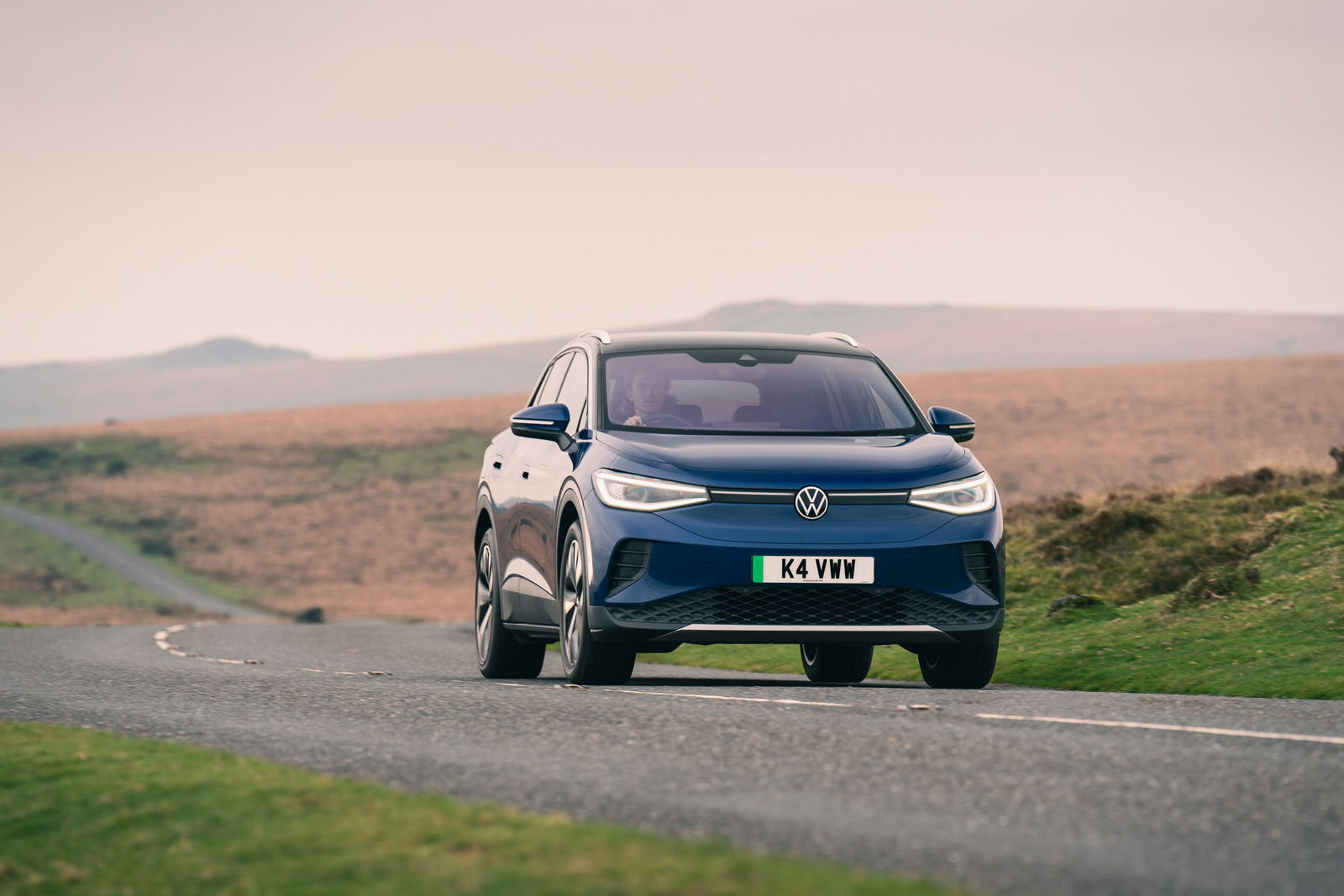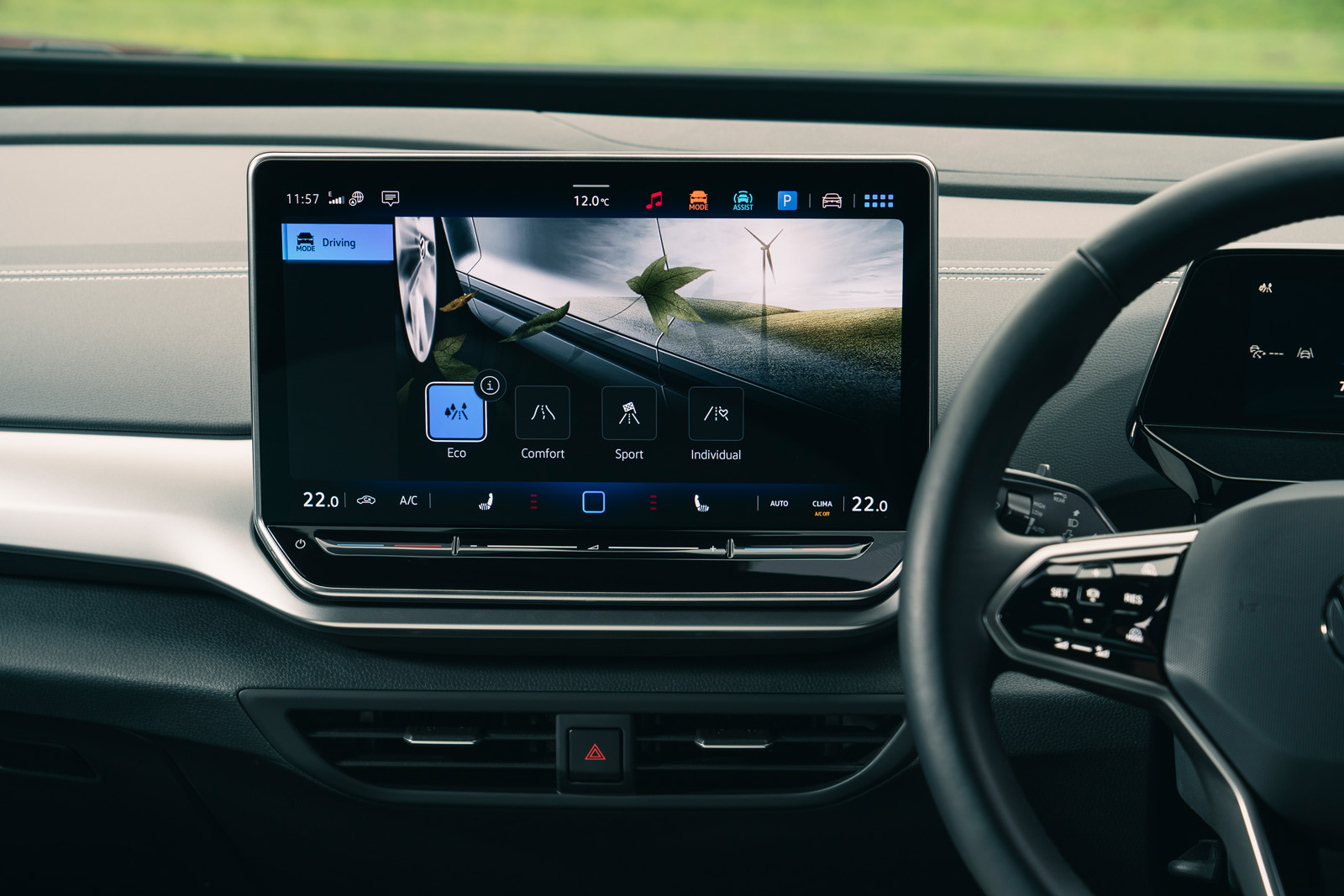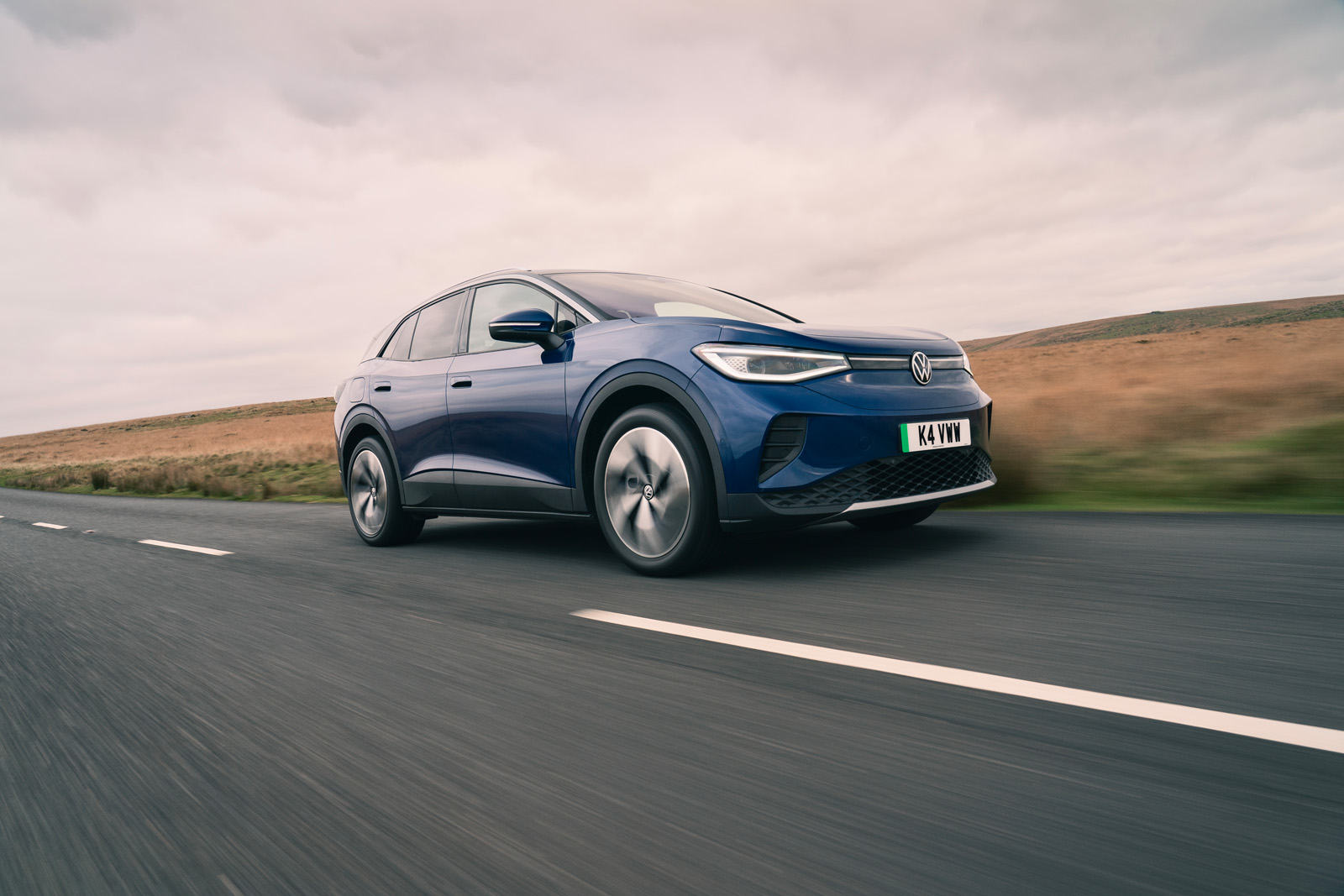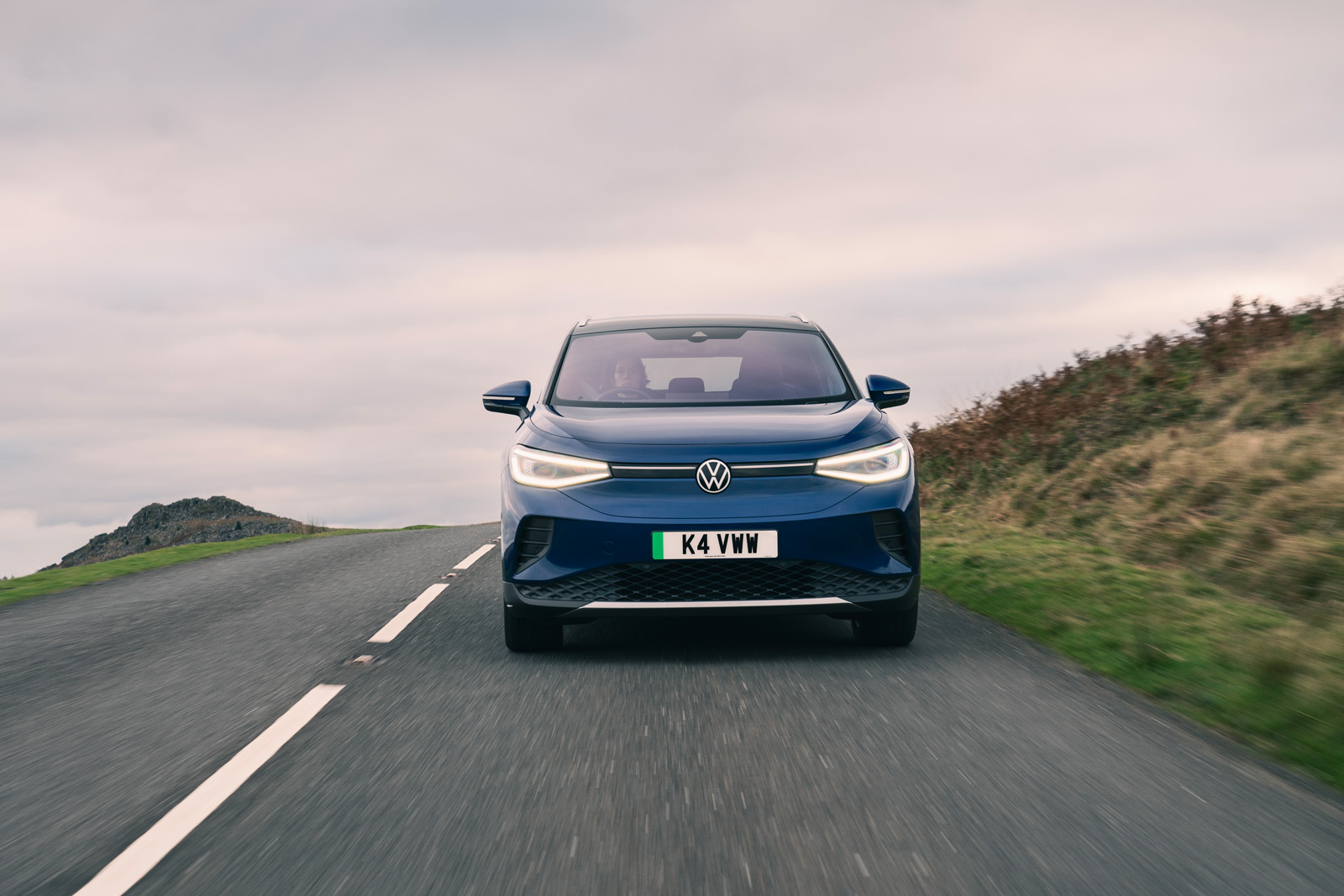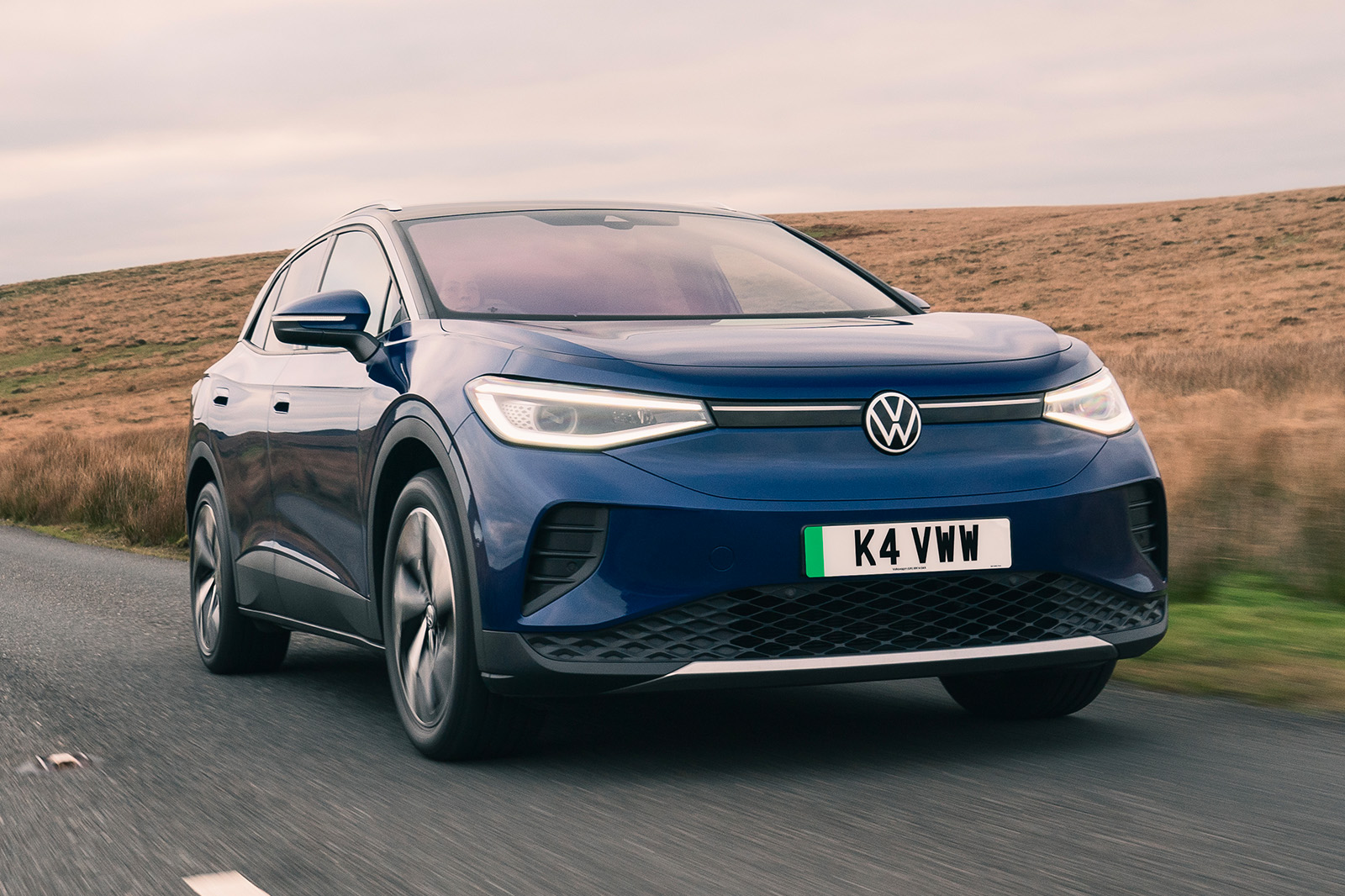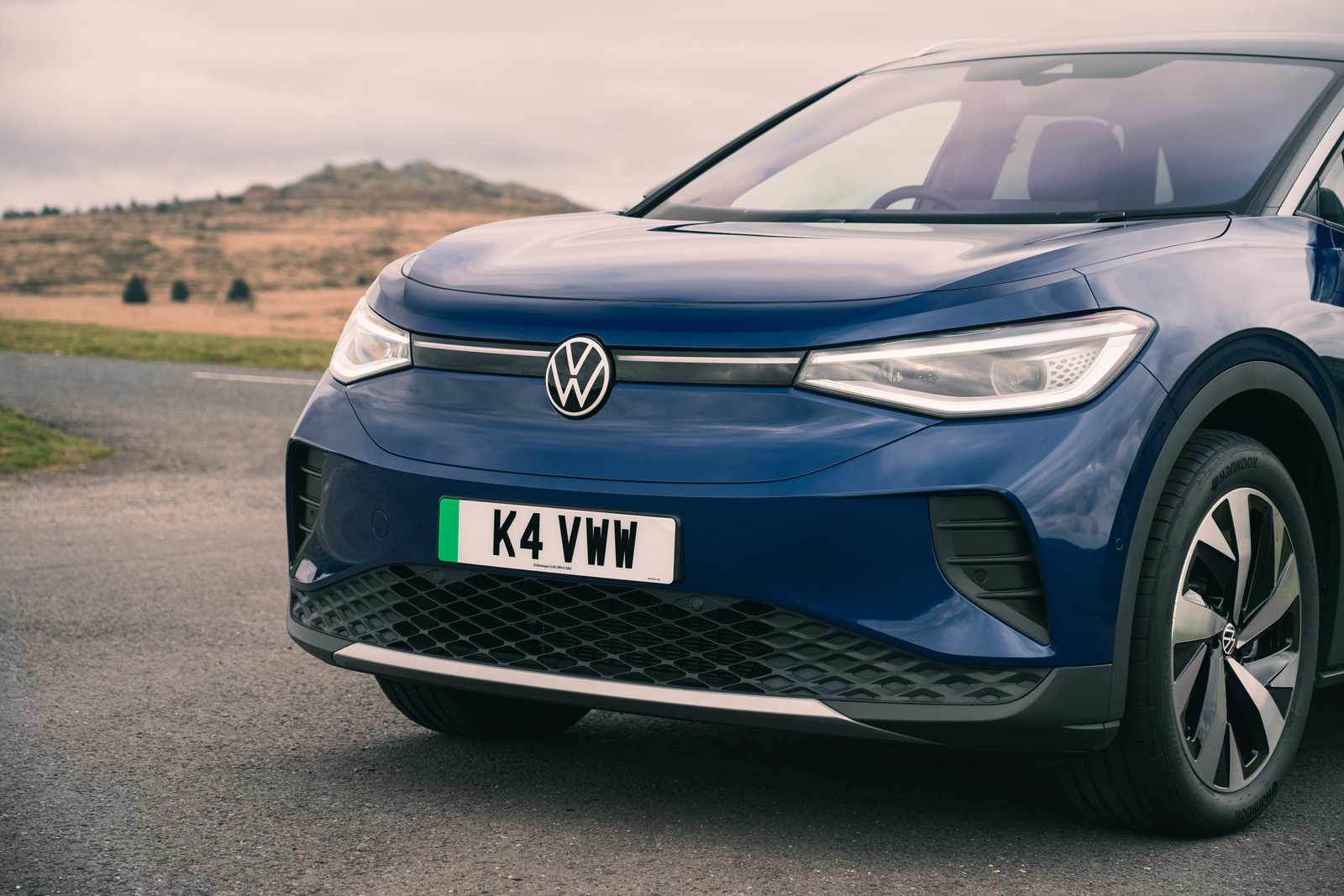The ID 4’s interior shares many hallmarks with the other cars in the ID range. That of the Volkswagen Golf loosely inspires the dashboard topography but, as with the ID 3, the cockpit is even more minimalistic. The conspicuous lack of buttons and switches might even seem quite shocking to someone coming from, say, a Tiguan.
It gets a leatherette steering wheel that features haptic touchpads for controlling the music, display and cruise control, which are slow and frustrating to use and far too easy to press by accident.
As standard, the ID 4 gets interior ambient lighting, heated front seats and a climate windscreen, plus a 5.3in driver’s display and a 10in touchscreen infotainment system. A larger, 12in touchscreen is available as an option.
Volkswagen’s infotainment systems were difficult to use in the recent past. They were slow, buggy and crashed repeatedly, but the brand seems to have overcome some of these shortcomings with the latest version of its ID software. While the system in the ID 4 still isn’t as intuitive and user-friendly as it could be, it’s a big improvement.
Material quality is reasonable. The attractive and superbly comfortable 'Style' seats, plus organic shapes in the door-card mouldings, and Volkswagen’s modern reluctance to use much in the way of a physical switchgear, do create quite a special ambience. And, yes, one that is genuinely very relaxing, not least because the scuttle is relatively low and forward visibility thus effortless.
And if you see the dashboard putting on a light show, that’s the ID Light concept, which blinks in different colours and patterns to relay everything from sat-nav directions to charging status to incoming calls. It’s moderately useful at times but mostly a bit distracting. The fundamental ergonomics are excellent, though, and you might not be expecting to find such generous rear leg room.
The ID 4 is akin to the Mercedes-Benz E-Class in the back, and overall it’s clear that Volkswagen has brought all its packaging know-how to bear with this first electric SUV. You really do get an impression of spaciousness.
It’s a genuinely practical car, with a boot measuring 543 litres, which is larger than the Kia EV6 (490 litres) and almost identical to the Renault Scenic (545 litres) – although like most SUVs of this size, it’s positively outclassed by the Tesla Model Y, which boasts 854 litres with all the seats up.



